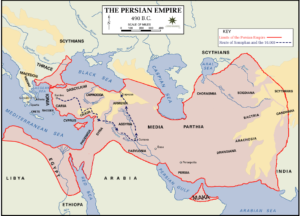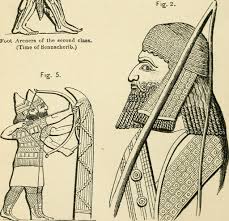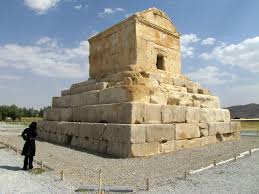The ancestors of Persians were shepherds. They moved up to the mountains and then down to the valleys depending on the season. For many generations the life in Persis continued in this way; it was shacked with the whole of the Middle East by the Assyrian casualties.
The speakers of Iranian languages may have migrated into a part of Asia as early as 1500 B.C. Presumably they were originally a nomadic tribe who filtered down through the Caucasus to the Iranian plateau. They apparently subjugated peoples already there and mingled with them, but their dominance of particular areas is recorded in the place names Parsua and Parsumash.
Achaemenid Persians Empire
The Assyrian military wiped out the kingdom of Elam, to whom the Persians were vassals, leaving the capital Susa to the lizards. Their rule was not long, though. In 612 BC the Assyrian Empire was destroyed by the Medes and Babylonians, who shared its vast territories. Subsequently, the Persians became subject to the Median Empire.

The Achaemenid Persians had a concept of “One World” and the “Unification of All People”. By accepting the practices and gods of the subject people they created the world’s first religiously tolerant empire.
Persian Empire Religion
They evolved an administrative system that was sufficiently flexible to cater for the multitude of different languages, races, religions, and cultures while maintaining the fundamental unity of government necessary to maintain the empire. The Persians were Aryans, speaking one of the eastern Indo-European group of languages.

Two lines developed from an early leader, Teispes, who had conquered Elam in the time of the decline of the Assyrian Empire – one line in Anzan, the other in Persia. Cyrus II, king of Anzan, united the nation and conquered Media, Lydia, and Babylonia.
His son, Cambyses, took Egypt, which was later ruled by Darius, the son of Hystaspes. Persepolis (see map) was an ancient city of Persia that served as a ceremonial capital for Darius and his successors.
Cyrus the Great Persian Empire
Cyrus the great ruled Persia from 559-530 B.C. After his death in 530 B.C. Cyrus’s son, Cambyses II took over the throne. In Cambyses’ absence, the throne in Persia is seized by a rebel. On the way home to challenge him, Cambyses dies. So one of his cousins took the challenge to kill the impostor. That cousin is Darius.

Darius came to the throne in 522 B.C. when the Persian Empire was facing mayhem. Darius was a remote cousin of Cambyses and Smerdis (sons of Cyrus). On Cambyses death, his brother Smerdis came to the throne. Darius described his victory in the Behistun inscription, in which he presents himself as the faithful servant of the Persian supreme god Ahuramazda.
Alexander first took Greece under his control and then advanced towards Persia. And his army won the battle against the Persians. Alexander then reaches Syria in 333 B.C. where he defeated Persian king Darius III.